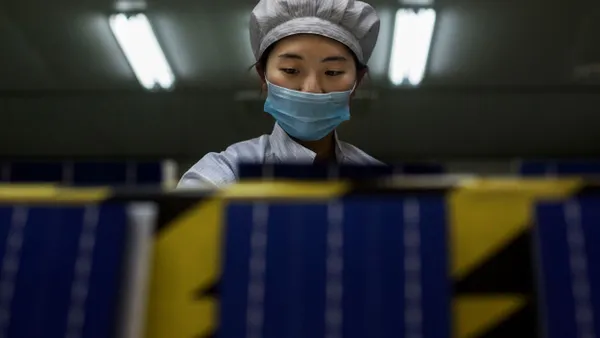Editor's note: This article is part of a spotlight series focused on microgrids. To see all the articles in the series, check out the spotlight page.
In late July, at the height of the summer tourist season, North Carolina's Ocracoke Island abruptly lost power. It was a worst-case scenario for residents who make their living catering to tourists visiting the Outer Banks, a chain of islands off the state's coast.
Ocracoke gets about 12 weeks a year of high traffic, and losing even one of those is "devastating," said Lee Ragsdale, senior vice president of grid infrastructure and compliance for North Carolina Electric Membership Corp. (EMC), the power supplier for most of the state's member cooperatives. Tourists were evacuated, after it became clear repairs would stretch days—and possibly weeks. A construction company had severed the transmission cable, cutting through the three lines that supply power to the island.
The outage and its financial impacts were a national news story for the week, but less well-publicized was this nugget: Ocracoke residents had power. The lights stayed on.
"There was a hashtag, #OBXBlackout, but it really wasn't accurate. Most of the island had power," NCEMC's Lindsey Listrom told Utility Dive. "There just wasn't enough power to support all the tourists."
North Carolina EMC and Tideland EMC, the island's cooperative, earlier this year completed the development of a microgrid. It has been operating since February, providing backup energy to less than 1,000 year-round residents whose power supply is susceptible to strong storms.
Defining a "microgrid" is complicated. For one, they often are not small, with some topping 100 MW of generation potential. And while they improve power resiliency, a microgrid is substantially more than just backup generation. They are systems of load and generation, connected to the electric grid but capable of "islanding" to operate independently. They frequently include battery storage and can provide services to the larger grid, acting as a single controllable resource.
S&C Electric is a leading provider of equipment and services for electric power systems, including microgrids. The company recently completed work on a microgrid for Ameren Corp., in Champaign, Illinois, and earlier this month it successfully completed a 24-hour islanding test, including a seamless transition from the grid.
S&C developed the battery energy storage system (BESS) and control technology that allowed the microgrid to seamlessly switch from grid power to its own renewable generation — meaning in the event of a grid outage, customers might not even know the disruption occurred.
"That's a really big deal," Chris Evanich, S&C Electric's applications director of microgrids, told Utility Dive. The BESS and secondary control technology is at the heart of that ability. The battery stores power from several assets, including gas, wind and solar.
The BESS system "matches the voltage and current of the grid, and a fault-interrupting device trips open and islands the system from the grid," Evanich explained. "And then the same thing happens when it reconnects." The BESS changes the voltage and frequency to match the grid and the switch closes back.
Microgrids are increasingly being used to ensure essential services are uninterrupted — a city's fire department, police or hospitals, for example. Financial companies, tech providers and universities are also frequent adopters. But microgrids as a resource are just beginning to grow.
A report from GTM Research last year predicted microgrid capacity in the United States will reach 3.71 GW by 2020 — more than double the current capacity. As of last summer, the firm estimated there were more than 150 operational microgrids in the country, making up 1.54 GW of capacity. About 100 more were in some stage of development.
Expanding microgrid capacity is not an easy process, in large part because no two are alike.
"If you've seen one microgrid, you've only seen one microgrid," said Evanich. "They are [site] specific, and they are specific because of what the users are trying to get out of the system, the functionality they want. ... the controls help get additional benefits and use cases, and can help with the economics."
The microgrid developed for Ameren, for instance, has 15 different use cases. "Everything from frequency and voltage support to power factor correction. Being able to island. A storm mode. There are a large variety of ways they are able to operate the microgrid."
Microgrids typically have a variety of generation assets, with diesel and solar frequently in the mix. The Ocracoke microgrid, for instance, includes a 3 MW diesel generator, 15 kW of solar, and a 500 kW/1 MWh Tesla battery. And the system utilizes demand management techniques as well, including 175 connected thermostats and 50 controlled water heaters.
While Ocracoke was able to keep the lights on for residents and businesses, and overall was a successful test of the microgrid, it did not go off without a hitch.
"Unfortunately, pretty quickly into the outage the diesel generator failed," said Ragsdale. "It was a catastrophic forced outage. It was completely unexpected. That unit has been operating for 20 years. It was a freak accident."
Despite that, the microgrid was able to provide a modest amount of energy to homes. The cooperative has a small but flexible system. "We've been putting it through its paces. This is a research project, and we're examining the interoperability of these components," said Ragsdale.
A pair of 2 MW diesel generators were brought in while the 3 MW unit was being repaired.
"We're always looking for ways to improve redundancy. The biggest thing is to be flexible," said Ragsdale. "The components all performed like we wanted them to ... The outage itself was terrible. But there can be good that comes out of it. There were plenty of lessons learned."






















